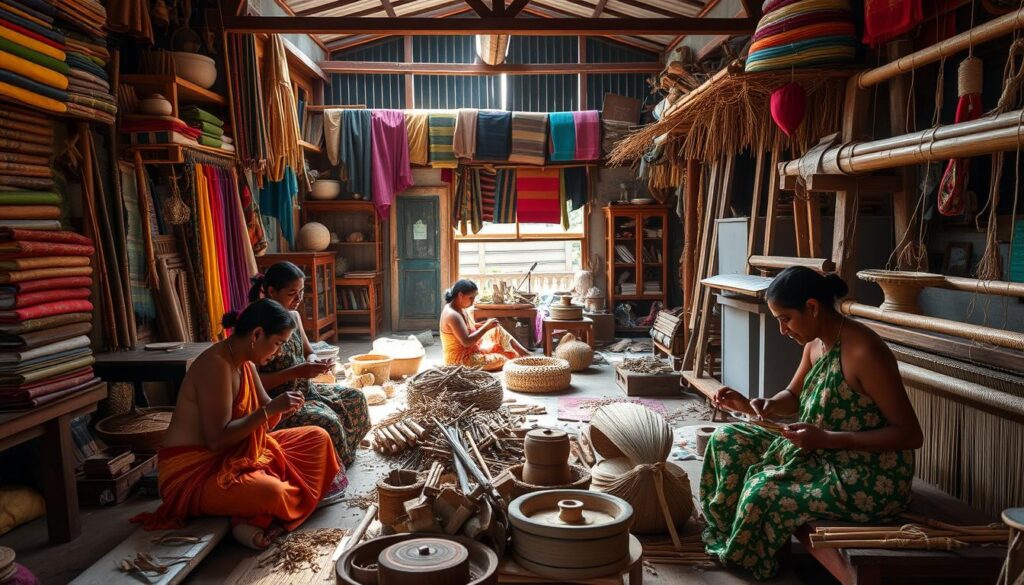ISF Sri Lanka Designs Plants for NICO COCO Indonesia
Sri Lanka’s ISF has signed a deal with Indonesia’s NICO COCO to design coconut processing plants. This partnership aims to transform the coconut industry in the region. The agreement was sealed through a Memorandum of Understanding (MOU).
ISF is known for its end-to-end engineering solutions in coconut and dairy processing. They bring nearly 50 years of experience to the table. Their innovative approach includes AI and real-time management systems.
These technologies are expected to boost NICO COCO’s production and efficiency. The partnership showcases ISF’s expertise in the field.

The signing took place at the INASCA Business Forum in Jakarta on October 7th. This event marks a major milestone for both companies. NICO COCO, Indonesia’s top coconut products maker, will gain from ISF’s advanced technology.
This teamwork is set to advance the coconut processing industry in Indonesia and beyond. It highlights the potential for international cooperation in agribusiness. The partnership paves the way for future growth and innovation in the sector.
ISF and NICO COCO Sign Landmark Agreement
ISF Industries and NICO COCO Indonesia have inked a game-changing deal for the coconut processing industry. The signing took place at the INASCA Business Forum in Jakarta. This partnership marks a new era of collaboration between these industry giants.
ISF’s Expertise in Coconut Processing Technology
ISF Industries boasts nearly 50 years of industry experience. They excel in designing and manufacturing cutting-edge processing equipment. Their unmatched expertise focuses on reducing costs through improved productivity and energy-efficient solutions.
NICO COCO’s Position as Indonesia’s Leading Coconut Products Manufacturer
NICO COCO Indonesia leads the country in coconut product manufacturing. They see ISF Industries as a key partner for modernization and expansion. This collaboration represents significant potential for growth and innovation in the sector.
Signing Ceremony at INASCA Business Forum in Jakarta
The Indonesian Ambassador to Sri Lanka witnessed the MoU signing at the INASCA Business Forum. This high-profile event highlights the partnership’s importance to the Indonesian coconut industry.
ISF will design advanced coconut processing plants for NICO COCO. These plants will feature automated solutions with AI and real-time management information. This collaboration aims to set new standards for efficiency and quality in Indonesia’s coconut processing.
ISF’s Innovative End-to-End Solutions for Coconut Processing
ISF leads the coconut processing industry with cutting-edge solutions. Based in Sri Lanka, this industrial engineering company has nearly 50 years of experience. ISF is a trusted partner for businesses aiming to optimize their coconut processing.
Nearly Five Decades of Industry Experience
ISF’s coconut processing expertise spans almost half a century. They develop innovative solutions for specific industry needs. Their knowledge has helped many businesses improve efficiency and streamline operations.
Automated Process Solutions Incorporating Artificial Intelligence (AI)
ISF integrates AI-powered automated solutions into their end-to-end offerings. These technologies optimize production, reduce waste, and boost productivity. AI-driven systems provide real-time monitoring and control for quick process improvements.
Real-Time Management Information and Cost-Saving Measures
ISF’s solutions offer valuable real-time management data. This approach helps companies make informed decisions and identify areas for improvement. Businesses can cut manufacturing costs while maintaining high-quality standards using ISF’s expertise.
ISF’s partnership with NICO COCO, Indonesia’s top coconut products maker, is crucial. It aligns with ISF’s plan to grow in Southeast Asia. This collaboration will likely transform Indonesia’s coconut processing industry.
Sri Lanka’s ISF to Design Coconut Processing Plants for Indonesia’s NICO COCO
ISF Industries, a top Sri Lankan company, has signed a big deal with NICO COCO, Indonesia’s main coconut maker. This team-up aims to boost NICO COCO’s output and efficiency through ISF’s new plant designs. ISF is known for making great food processing gear.
ISF Industries has been a trusted name for nearly 50 years. They offer smart solutions for coconut and dairy processing firms. ISF uses AI for real-time info and cost-saving, ready to change how NICO COCO makes products.
This deal is a big step for ISF to grow in Southeast Asia. By making top-notch coconut plants for NICO COCO, ISF wants to show off its skills. They aim to make production better, cut costs, and bring in new tech.
This team-up will likely change Indonesia’s coconut industry for the better. It sets new bars for how well things work and how good they are. NICO COCO can now grow and get better with ISF’s help.
As NICO COCO updates its work, it can become an even bigger player. At the same time, ISF proves it’s the best at helping food makers in Southeast Asia.
Strategic Partnership to Enhance NICO COCO’s Production Capacity and Efficiency
ISF and NICO COCO are joining forces to transform Indonesia’s coconut processing industry. This partnership aims to boost production capacity and efficiency. It combines ISF’s expertise in automated plants with NICO COCO’s leading manufacturing position.
ISF Director Anjula Sivakumaran highlighted the partnership’s significance. She said, “We’re excited to work with NICO COCO, a key player in Indonesia’s coconut sector. Our cutting-edge designs will help ISF become a top solutions provider in Southeast Asia.”
NICO COCO COO Susanto Kusnadi expressed optimism about the collaboration. He stated, “ISF’s proven track record makes them ideal for our expansion project. We expect this partnership to drive our success and industry growth.”
ISF brings nearly 50 years of experience to the table. They specialize in AI-powered automated process solutions. NICO COCO will benefit from real-time management information and cost-saving measures.
This partnership is set to reshape Indonesia’s coconut processing sector. It will establish new standards for production capacity and operational efficiency.


